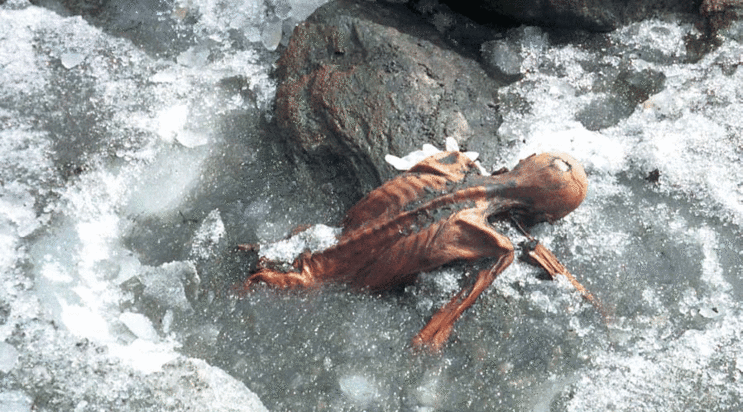I thank Otzi for sharing and appreciate that he remained preserved almost 5 thousand year for us to study! On Sept 19, 1991, two German hikers on the Austrian Italian border (near Bolzano, Italy) stumbled upon a body frozen in ice who they believed was a decease mountaineer. The body was eventually was taken too Innsbruck and it's true age was revealed. Otzi (aka Similaun Man, Man from Hauslabjoch, Homo Tyrolensis and Hauslabjoch mummy) is a well preserved "natural" mummy who lived about 3,300 BCE (that's 5312 year ago!). Today he has found a home at the South Tyrol Museum of Archaeology in Bolzano, South Tyrol, Italy. His body has been dated, examined, xrayed... you name it. There is so many interesting bits of information that Otzi has shared... I'm amazed! First of all, Otzi's body was covered with over 50 tattoos in the form of groups of lines and crosses. Unlike modern tattooing methods, the tattoos were not produced with needles but by means of fine incisions into which charcoal was rubbed. Interestingly, Otzi’s tattoos are located at points where his body was subjected to strain during his lifetime and probably caused him a lot of pain. The tattoos were therefore probably intended as therapeutic measures rather than as symbols. As known as ACUPUNCTURE! It was believed that the Chinese had originated acupuncture, however, it appears that Otzi's people might have been first.. who knows! Otzi was about 45 years old, lactose intolerant and suffering from back and arthritic problems. He was about 5'3", type O blood, predisposed to heart disease, 110 pounds and had brown eyes. His arteries were hardened and his teeth were decaying. On Otzi body, red blood cells were found intact leaving us with many clues. Oddly enough, scientist were able to analyze his DNA and find 19 genetic relatives living today in Austria's Tyrol region. They also show him to be the first documented case of infection by a Lyme disease bacterium. His is DNA also showed that he is closely related to modern inhabitants of Corsica and Sardinia than to populations in the Alps, where he was unearthed. Otzi's clothing quite intricate and sophisticated. Near his body they found a grass mat which at they initially believed was a cape. Today, they have decided it was more likely head protection from rain. He wore a goat fur coat (fur on outside) that was sewn in a stripped pattern, a goat leather loin cloth, a bear skin hat (fur out), goat skin legging that tied to his belt and shoes, deer skin shoes that used hay on the soles to insulate and a belt and pouch. Under normal conditions, his clothing would have been disintegrated, but Otzi's frozen situation preserved everything. Otzi didn't forget to bring his first aid kit. It included two hide strips, on to each which a round lump of material had been threaded. The strips were attached his clothing. Analysis showed that the lumps consisted of the fruiting body of the birch polypore fungus. The fungus was used upd until the 20th century were used for medicinal purposes. It is believed Otzi died of a injury to his shoulder from a flint arrow causing massive bleeding. He was found to have hand injuries indicating possibly hand to hand combat and a fractured skull causing a bleed in the brain. His arrows and knives have the DNA of 3 other individuals leaving historians to believe he was involved in possibly a dispute with a neighboring group. In his body they found 30 different types of pollen that indicated he died in the spring or early summer and was in the Vinschgau Valley 12 hours prior to his death. They also discovered that he ate meat and possibly cereal approximately 1/2 before death and another meal prior 4 hours before death.
Otzi carried with him many tools including a copper bladed pick axe, a quiver with bow and arrows, a pouch and belt, a small dagger, a net, containers made of birch bark and a stone disc used in hunting. He also carried 18 different types of wood, flint, grass, bark, leather and various items of clothing.
It just amazed me that scientists were able to learn so much about Otzi and his life/ death.














No comments:
Post a Comment